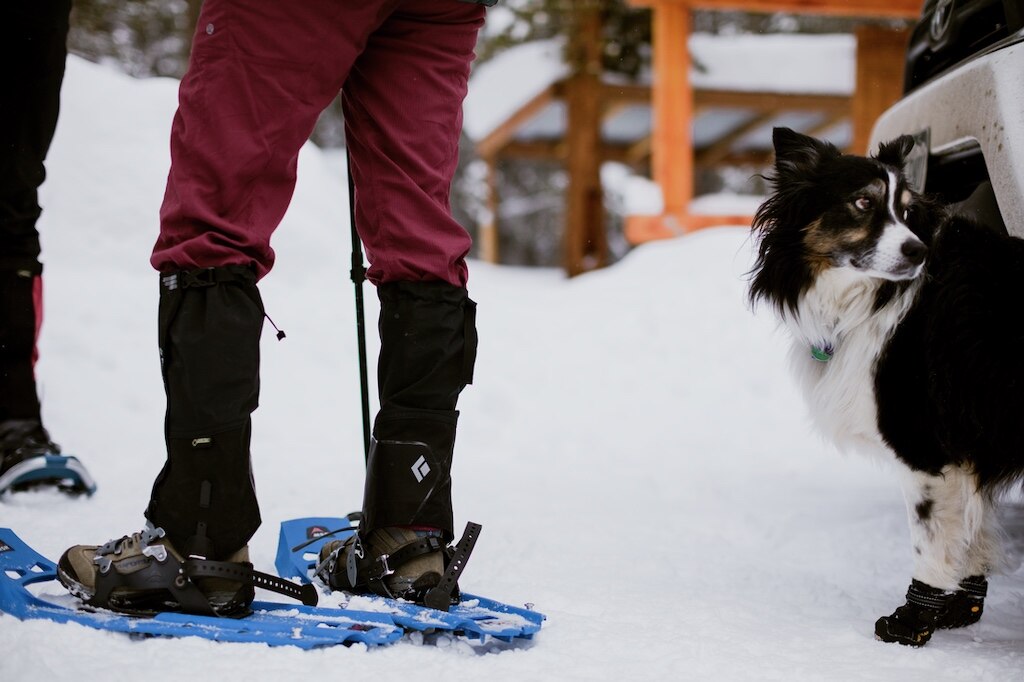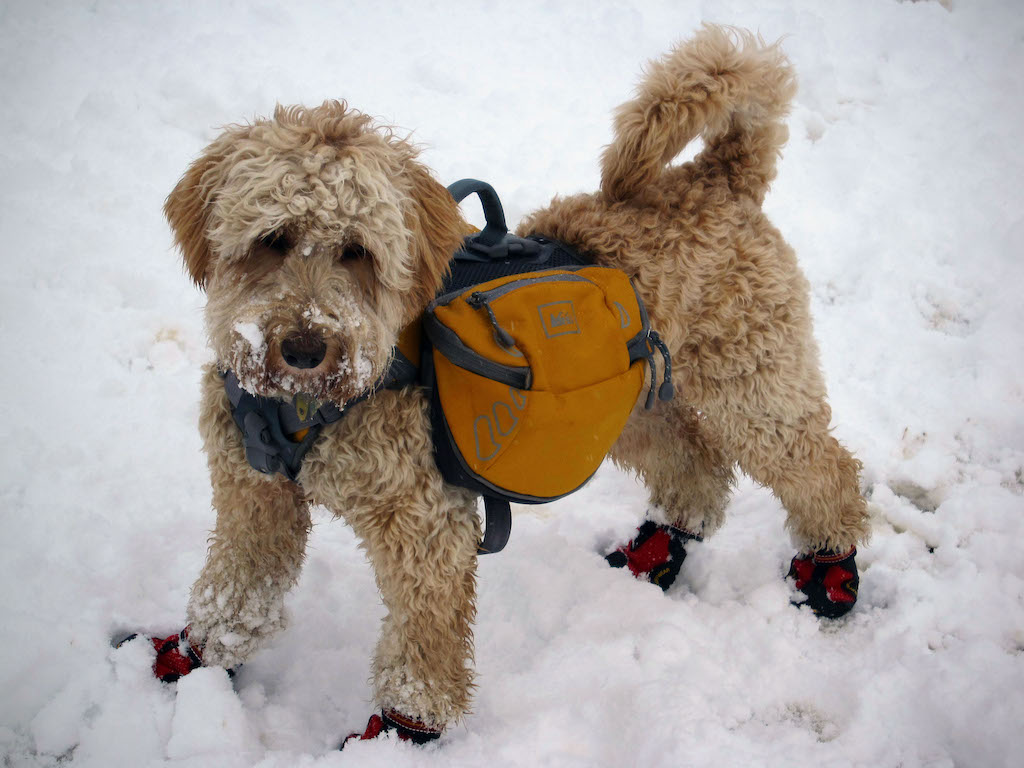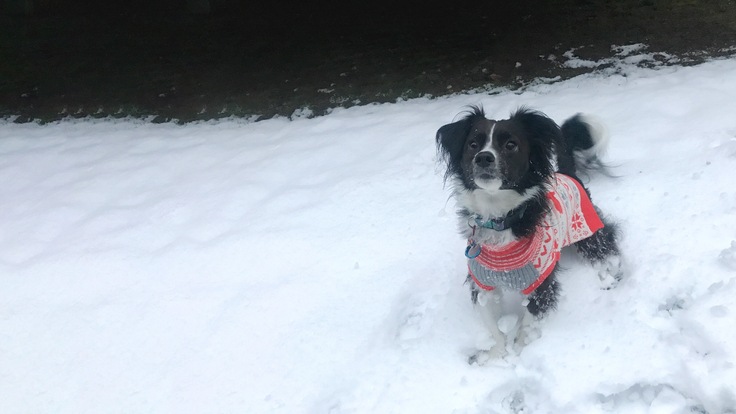While it's generally true that outdoor dogs are not picky about where you take them, those that get to romp through the snow somehow seem like they're living their best lives. But cold temperatures and snowy landscapes introduce some new concerns for your canine, so it's wise to take a few precautions before and during your winter outings together.
We spoke with Dr. Bill Rosolowsky, a retired veterinarian who worked in the field for 33 years, but now spends part of his post-practice career as an REI Co-op employee at our store in Lynnwood, Washington. This article shares Dr. Rosolowsky's advice for proper paw care on your winter outings.
First, Assess Your Dog's Overall Health
While paw care is indeed a key concern, don't get tunnel vision. The paws are connected to the rest of the dog, and your first consideration is whether or not your dog is healthy enough for a winter outing.
Get a veterinary checkup: At the very least, call your vet to get advice specific to your dog's medical history. Conditions like heart problems, low thyroid production or diabetes can all impact a dog's ability to regulate temperature and energy levels in the cold. If your dog has been prescribed medication for arthritis pain control, ensure that they get dosed before your adventure.
Prevention is better than treatment: This time-honored medical adage applies here, too. Dogs do not make great patients when they get ill or injured because they don't understand the reason for treatments that might be required to aid healing.
Is Your Dog Ready for Winter?

Generally speaking, "arctic" breeds, such as huskies, Samoyeds and malamutes, do well in winter because they have a thick fur and undercoat cover, thick fat deposits under their paw pads and robust circulatory systems. Other breeds have these characteristics, but to a lesser degree.
If your dog is out in the snow and the outer coat collects only snow, but not any ice, it's a sign that it's reasonably well adapted to winter. If you see a lot of ice forming, that's a sign that you need to take extra precautions to keep your dog warm.
How to Take Care of Your Dog's Paws in Winter
Because ice and cold can be especially hard on paws, you do want to pay special attention to them.
Inspect your dog's pads: Just as you would before a summer hike, examine the paw pads closely to ensure there are no injuries that your planned outing might aggravate.
Trim your dog's nails: It's always wise to keep your dog's nails neatly trimmed: A broken nail can sometimes bleed, a complication you don't want in winter (or summer). In addition, long nails can splay toes farther apart when your dog walks, which opens up tender spaces between toes to snow and ice accumulation.

Try winter booties for your dog: Many dog owners immediately think of booties as the most obvious way to protect the paws. You can find dog winter boots, too, that are fleece-lined for warmth. And it's absolutely true that booties are a great solution to winter paw protection—if you get a pair that fits properly and you take the time to acclimate your dog to wearing them. It's also important to recheck and readjust the fit after 15 minutes or so of outdoor wear.
Dr. Rosolowsky says many of his patients reported success with clicker-style training for dogs when they first get booties. Ruffwear also offers some tips, including pre-breaking-in new booties by working them with your human hands first, then having your dog move incrementally from having them on briefly, to short sessions in the house, to walks of increasing distances.
Use dog paw wax: Sled-dog owners will tell you that a great way to prevent ice balls from forming on dog paws is to prevent snow from adhering to them in the first place. Once snow accumulates, the dog's body heat can melt and then refreeze it into clumps of ice. Rubbing your dog's paws with some type of "musher's wax" helps keep snow from sticking to its paws in the first place. These paw waxes are also formulated to be nontoxic should a dog lick the wax off.
Should you trim paw hair? If your dog breed is well adapted to snow and cold, then there's no need to trim paw hair because ice buildup is less of an issue. Waxing, though, is still wise. If your dog is prone to ice accumulation on its fur, then trimming paw hair is prudent—and then waxing is a must because having snow collect on the stubble can lead to ice accumulation close to the skin.
How to Keep Your Dog's Body Warm
A dog's body prioritizes core warmth over extremity warmth, so steps that maintain a healthy level of overall warmth will also aid the paws' cause. Not surprisingly, the same things you do to keep yourself warm on winter outings will also help your dog. Here's Dr. Rosolowsky's advice:
Dress your dog warmly: Your dog's fur and undercoat serve as a nice base layer. If the temperature is sufficiently cold, consider adding a sweater or dog jacket as an outer layer, especially for a non-arctic breed.
Feed your dog high-calorie food: Dogs metabolize food to stay warm, so they need to ingest more calories and carbohydrates in winter. Make sure, though, that any new food is tested out at home to be sure your dog tolerates it well.
Give your dog extra water: Cold air is dry air and a dog's panting expels water with each breath. So be sure to give your canine companion plenty of water on your winter excursions together. Lukewarm water works better, too, because your dog doesn't need to expend calories to warm it up.
Keep your dog moving and out of the wind during breaks: Activity generates heat, so a moving dog is generally a warmer dog. When you do rest, look for an area sheltered from breezes so that windchill doesn't become a concern. Having an insulated sit pad can also help.
Watch for Signs of Hypothermia in Dogs
Listlessness, curling up, reluctance to move and shivering are all signs that your dog is struggling with the cold. When you see these, it's time to curtail the trip and head back to a warm place. Small dogs tend to be more susceptible to the effects of cold, so you should carry your dog back to warmth if they are small enough to do so.
Winter Is the Time for Warm Baths
Warm baths, or at least warm-water paw washing, is important for a variety of reasons:
- Paw wax adheres more readily to clean paws.
- Warm water helps remove ice buildup after an outing.
- Warm baths are also an excellent way to warm up a chilled dog after an outing.
- When you get home from an in-town walk, washing paws can remove salt and chemical deicers your dog might pick up from the sidewalks or streets.

